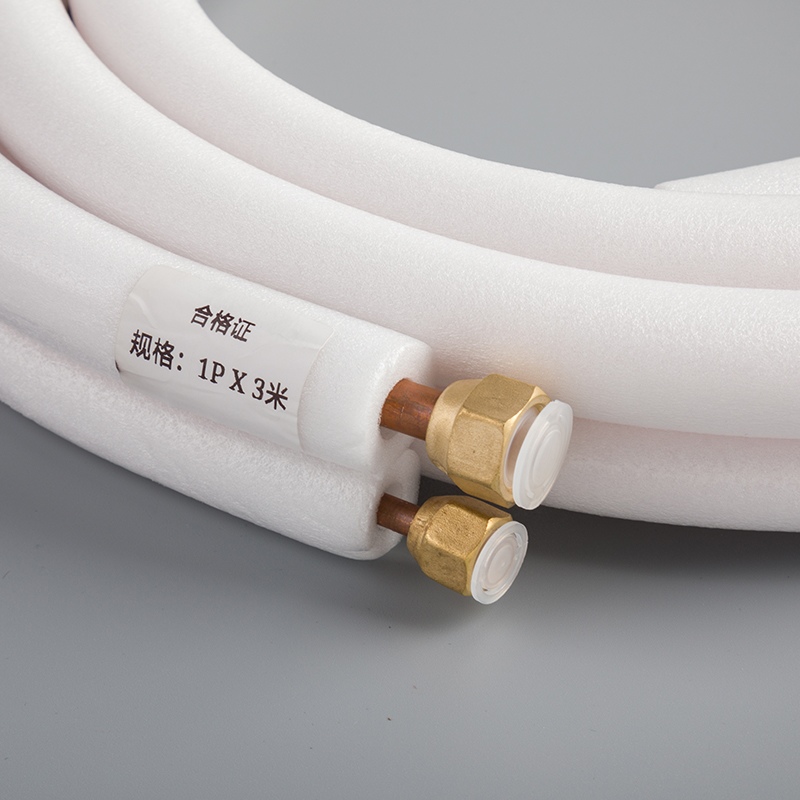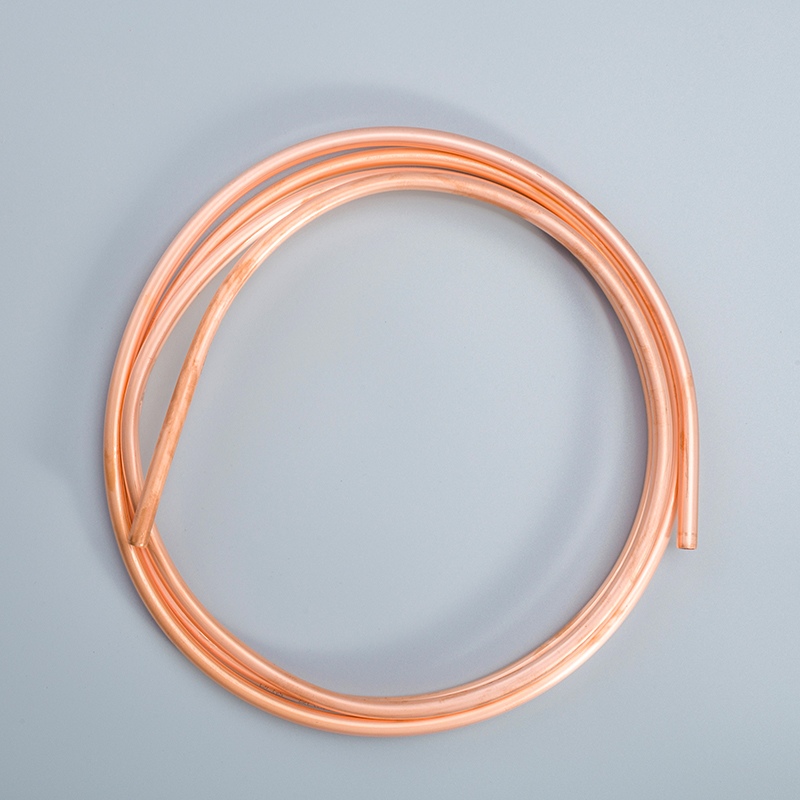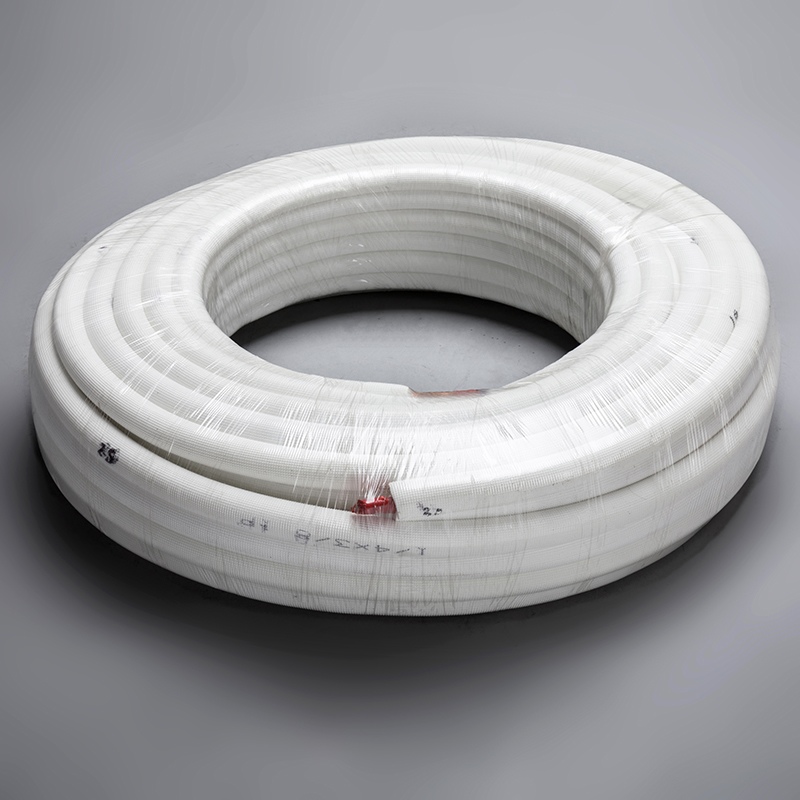Why Specific Materials Enhance Air Conditioner Insulation

Benefits of using specific materials for air conditioner insulation
Enhancing air conditioner insulation is crucial for optimal performance. Sheet insulation offers long-term benefits by boosting energy efficiency, cutting maintenance costs, and extending equipment lifespan. Companies embracing AEROFLEX® insulation witness substantial cost savings and ROI. The energy saved through insulation significantly surpasses that used in manufacturing. Achieving a 'LowHeat' standard is pivotal for minimizing insulation's embodied carbon impact, making it an environmental ally against CO2 emissions.
Understanding Air Conditioner Insulation
Basics of Insulation
Definition and Purpose
Insulation serves a crucial role in air conditioning systems. It prevents heat transfer between indoor and outdoor environments, maintaining desired temperatures efficiently.
How Insulation Works
Insulation functions by creating a barrier that hinders the movement of heat. By reducing heat flow, insulation helps in maintaining consistent temperatures within the space.
Types of Insulation Materials
Traditional Materials
Fiberglass: Known for its heat resistance and durability.
Rubber: Essential due to its excellent insulation properties.
Foam: Commonly used for its insulating capabilities.
Modern Materials
Reflective Insulation: Utilizes reflective surfaces to reduce radiant heat transfer.
Aerogel: Offers high-performance insulation with unique properties.
Closed-Cell Elastomeric Pipe Insulation: Provides numerous benefits for HVAC systems.
Importance of Effective Insulation
Energy Efficiency
Effective insulation enhances energy efficiency by reducing the need for constant heating or cooling, resulting in lower energy consumption.
Cost Savings
By minimizing heat loss or gain, proper insulation reduces the workload on air conditioning units, leading to decreased energy bills and maintenance costs.
Environmental Impact
Choosing the right insulation materials contributes to environmental sustainability by lowering energy usage and reducing greenhouse gas emissions.
Specific Materials Used in Air Conditioner Insulation

Fiberglass
Fiberglass insulation, a common type of insulation material, is recognized for its thermal properties and affordability. Widely used in residential and commercial buildings, it enhances energy efficiency and reduces heat transfer effectively.
Properties and Benefits
Thermal Efficiency: Fiberglass insulation excels in minimizing heat loss or gain, ensuring optimal temperature control.
Affordability: This material provides cost-effective insulation solutions for various applications.
Versatility: Its flexibility allows easy installation in different spaces, enhancing overall energy performance.
Application in Air Conditioners
Residential Use: Fiberglass insulation is ideal for homes, offering efficient thermal regulation.
Commercial Settings: In businesses, fiberglass insulation contributes to maintaining comfortable indoor environments.
Industrial Applications: Industries benefit from the durability and effectiveness of fiberglass insulation.
Foam Insulation
Foam insulation plays a crucial role in air conditioner systems due to its insulating capabilities and versatility.
Types of Foam (e.g., Polyurethane, Polystyrene)
Polyurethane Foam: Known for its high R-value, providing excellent thermal resistance.
Polystyrene Foam: Offers moisture resistance and durability for long-lasting insulation solutions.
Advantages and Disadvantages
Advantages:
Superior Insulation: Foam materials prevent heat transfer effectively.
Versatile Applications: Suitable for various HVAC components.
Longevity: Ensures durable performance over time.
Disadvantages:
Initial Cost: Higher upfront investment compared to traditional materials.
Environmental Impact: Some foam types may have ecological concerns if not disposed of properly.
Reflective Insulation
Reflective insulation is a valuable addition to air conditioning systems, utilizing reflective surfaces to enhance thermal performance efficiently.
How It Works
Reflective insulation works by reflecting radiant heat away from the source, maintaining consistent temperatures within the space.
Benefits in Air Conditioning Systems
Energy Efficiency Boost: Reduces heat absorption during hot weather conditions.
Moisture Control: Helps prevent condensation issues within the HVAC system.
Durability: Resilient against wear and tear, ensuring long-term effectiveness.
Aerogel
Aerogel, known for its unique properties, is a cutting-edge material in the realm of insulation. Its high-performance insulation capabilities set it apart from traditional materials, offering exceptional benefits to various applications.
Unique Properties
Aerogel's ultralight composition enables efficient thermal regulation without adding unnecessary weight to structures.
The material's porous structure traps air particles, creating a barrier against heat transfer and enhancing insulation effectiveness.
Aerogel's flexibility and adaptability allow for seamless integration into complex spaces, ensuring comprehensive coverage and optimal energy efficiency.
High-Performance Insulation
Aerogel excels in providing superior thermal resistance, minimizing heat loss or gain to maintain consistent temperatures.
Its low thermal conductivity ensures maximum energy savings by reducing the need for continuous heating or cooling.
The material's longevity and durability guarantee lasting insulation performance, making it a cost-effective choice for sustainable building solutions.
Closed-Cell Elastomeric Pipe Insulation
Closed-cell elastomeric pipe insulation is a game-changer for HVAC systems, offering unparalleled benefits that enhance overall efficiency and performance.
Benefits for HVAC Systems
This type of insulation provides exceptional moisture resistance, preventing condensation buildup within pipes and ensuring system integrity.
Closed-cell elastomeric insulation offers superior protection against external elements, safeguarding pipes from damage and corrosion.
Its flexible nature allows for easy installation on various pipe configurations, promoting seamless integration and optimal thermal efficiency.
Application Techniques
Surface Preparation: Ensure pipes are clean and dry before applying the insulation to maximize adhesion and longevity.
Cutting and Fitting: Measure accurately to achieve a snug fit around pipes, minimizing gaps that could compromise insulation effectiveness.
Sealing Joints: Use appropriate adhesives or tapes to seal joints securely, preventing air leakage and maintaining thermal performance.
How Specific Materials Enhance Insulation
Thermal Conductivity
Definition and Importance
Insulation materials vary in their thermal conductivity, which determines how effectively they resist heat flow. Materials with low thermal conductivity are crucial for maintaining consistent temperatures and reducing energy consumption. Understanding this property is essential for selecting the most efficient insulation for air conditioning systems.
Comparison of Materials
Fiberglass: Known for its thermal resistance, fiberglass offers a reliable solution for minimizing heat transfer in air conditioners.
Foam Insulation: With varying types like polyurethane and polystyrene, foam materials provide excellent thermal resistance and versatility.
Reflective Insulation: Utilizing reflective surfaces, this material excels in reducing radiant heat transfer, enhancing overall thermal performance.
Moisture Resistance
Impact on Insulation Performance
Moisture resistance plays a critical role in maintaining insulation effectiveness over time. Materials that can withstand moisture prevent degradation and ensure long-lasting performance, especially in humid environments where condensation may occur.
Materials with High Moisture Resistance
Closed-Cell Elastomeric Pipe Insulation: This type of insulation is specifically designed to resist moisture, preventing issues like mold growth and corrosion within HVAC systems.
Reflective Insulation: Apart from its thermal benefits, reflective insulation also offers high moisture resistance, making it suitable for humid climates.
Aerogel: Despite its lightweight composition, aerogel demonstrates exceptional moisture resistance properties, ideal for challenging environmental conditions.
Durability and Longevity
Factors Affecting Durability
Several factors influence the durability of insulation materials. Proper installation, exposure to external elements, and the material's inherent properties all contribute to how long the insulation will remain effective in air conditioning applications.
Long-Lasting Insulation Materials
Aerogel: Known for its durability, aerogel provides long-lasting insulation due to its robust structure that withstands environmental stressors.
Closed-Cell Elastomeric Pipe Insulation: Engineered for longevity, this type of insulation maintains its performance even under harsh conditions, ensuring continuous protection for HVAC systems.
Reflective Insulation: Resilient against wear and tear, reflective insulation offers durable performance throughout its lifespan.
Ease of Installation
Installation Techniques
Utilize pre-cut insulation materials to match specific dimensions, ensuring a snug fit around air conditioner components.
Secure insulation with appropriate adhesives or fasteners to prevent displacement and maintain consistent coverage.
Follow manufacturer guidelines for proper installation methods, guaranteeing optimal performance and longevity of the insulation.
Materials That Simplify Installation
AEROFLEX EPDM™ Sheet and Roll Insulation: This product offers a user-friendly design that simplifies installation on various surfaces, including pipes, equipment, tanks, vessels, and spheres.
Closed-Cell Elastomeric Pipe Insulation: Available in sheet and roll formats, this material provides flexibility during installation on large and irregular surfaces, ensuring comprehensive coverage for enhanced efficiency.
Pre-Cut Insulation Sheets: These convenient sheets reduce installation time by matching standard dimensions, making the process efficient and hassle-free.
Case Studies and Real-World Applications

Residential Air Conditioning
Examples of Effective Insulation
ArmaGel® HT: Offers superior thermal performance up to 650 ºC, ensuring optimal insulation in residential air conditioning systems.
Extruded polystyrene foam (XPS): Known for its improved surface roughness and higher stiffness, providing enhanced insulation benefits.
Polyisocyanurate: Commonly used as rigid thermal insulation for roofing and vertical walls, contributing to energy efficiency in residential settings.
Hempcrete: Acts as an insulator and moisture regulator, maintaining consistent temperatures and humidity levels indoors.
EPDM rubber: Provides better insulation performance, low thermal conductivity, high resistance to moisture, and durability for long-lasting effectiveness.
Benefits Observed
Energy Efficiency: Using specific materials like ArmaGel® HT and Polyisocyanurate leads to reduced energy consumption and lower utility bills.
Cost Savings: Effective insulation solutions such as XPS and EPDM rubber minimize heat loss or gain, resulting in cost-effective maintenance for homeowners.
Environmental Sustainability: Hempcrete's eco-friendly properties contribute to reducing carbon footprint while ensuring a comfortable living environment.
Commercial Air Conditioning
Insulation Solutions for Large Systems
Implementing robust insulation solutions like ArmaGel® HT and Polyisocyanurate in commercial air conditioning systems enhances thermal performance on a larger scale.
Utilizing Extruded polystyrene foam (XPS) with improved surface roughness ensures efficient temperature control in expansive commercial spaces.
Incorporating EPDM rubber for better insulation performance offers significant advantages in maintaining consistent indoor conditions.
Performance and Efficiency Gains
Enhanced Thermal Regulation: Specific materials like ArmaGel® HT and XPS provide superior thermal resistance, improving overall system efficiency in commercial setups.
Long-Term Durability: Polyisocyanurate's rigid structure ensures lasting insulation benefits, reducing the need for frequent replacements in large HVAC systems.
Moisture Resistance: EPDM rubber's high resistance to moisture safeguards commercial air conditioning units from potential damage due to condensation.
Industrial Applications
Specialized Insulation Needs
Addressing specialized requirements with materials like ArmaGel® HT is crucial for meeting the rigorous demands of industrial applications.
Utilizing Polyisocyanurate as rigid thermal insulation ensures optimal performance in industrial settings with varying environmental conditions.
EPDM rubber provides exceptional durability and moisture resistance essential for protecting industrial HVAC systems.
Materials Used in Industrial Settings
ArmaGel® HT: Offers superior thermal performance up to 650 ºC, making it a top choice for industrial insulation needs.
Polyisocyanurate: Known for its rigidity and versatility, this material serves diverse applications within industrial environments effectively.
EPDM Rubber: With its durability and high resistance to moisture, EPDM rubber is a reliable option for long-lasting insulation solutions.
Insulation plays a vital role in air conditioning systems, ensuring energy efficiency and cost savings. Choosing the right materials, such as fiberglass, foam, and reflective insulation, is key to maximizing performance. The future of air conditioner insulation lies in innovative solutions like Aerogel and closed-cell elastomeric pipe insulation. As technology advances, these materials will continue to enhance thermal conductivity and durability. Readers are encouraged to consider insulation upgrades for long-term benefits in their HVAC systems.
Expert Testimony:
Insulation Manufacturer
"Ease of installation – the ultimate performance will be determined by how effectively a builder can install a material using conventional skills."
See Also
Enhance AC Efficiency with Copper Pipes: Insulation Tips Revealed
Discover the Top 5 Effective Insulation Types
Copper Tubes vs Other Materials: AC Efficiency Comparison
The Importance of Pure Copper Pipes in Air Conditioning Efficiency

